Preparation of Papers in Two Column Format for the ICSES Transactions and Conferences
- 18/05/2022
- Nghiên cứu & Chuyển giao CN
- Hà Mỹ Duyên
The use of self-service technologies is dramatically increasing across industries. In the air passenger transportation service, self-services are focused on speeding up the whole dispatching process of passengers. Whereby, self check-in kiosk is the first form that help the passenger contact with services at the airport.
Currently, the airlines typically use service counters found at airports. The check-in is normally handled by an airline itself or by a handling agent working on behalf of an airline [1]. Depending on the professional capacity of the staff at the counter and depending on the flight schedule as well as the characteristics of each passenger, the check-in time can be fast or slow. But obviously, this will cause a large number of passenger to wait in line, causing disorder, noise pollution and many other problems. Meanwhile, the kiosks can release a large number of passengers. This is mostly a time saver, because queues on the airports are smaller. Next up: more personal control, selection of certain services (airplane seats) or fewer errors in the flight details. Self check-in at the airport also offers a number of advantages, such as better usage of airport space. Along with more space, we can clearly see a business opportunity for new potential investors. The benefits of self check-in for airlines are in reducing operating and labor costs [2]. The global market for airport kiosks is expected to grow at value CAGR of 12.7 per cent and volume CAGR of 11.4 per cent by the end of 2029, driving the adoption of self-service technologies [3]. This is the results of a new Fact.MR report that provides key market insights for the forecast period of 2019-2029.
Check-in is just one step in the air passenger transportation process, that consists of logically sequential operations. This process (Fig. 1) started with transportation to the airport and continues clearance at check-in, immigration and customs counter and followed by screening passengers and his baggage at airport. In the next stage the passenger is waiting in so called a sterile space (the space for passengers and the baggage after screening process) followed by passing through the gate followed by checking of passenger’s boarding pass. The final step of the Air-transport process is transportation and boarding to the aircraft and seating passenger on the chosen place [4].
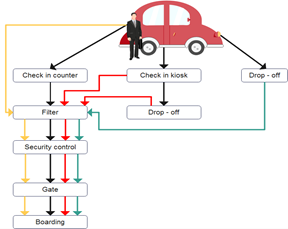
Figure 1. The conventional Check-In Process
Although the self check-in kiosks are in use for a long time, there are always some issues that need improvement, yet. There are too many kiosks from different airlines with different designs, functions and graphic user interfaces at the airports, which can cause chaos for the passengers. The location of self check-in kiosks in the terminals is also often poorly organized and can be difficult to reach places unseen by passengers. Fig. 2 shows some types of airline kiosks at Da Nang International Airport, Vietnam.
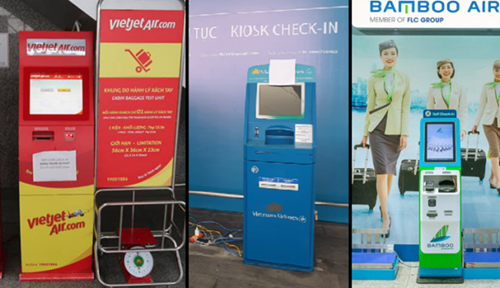
Figure 2. From left to right are check-in kiosks of Vietjet Air, Vietnam Airlines, Bamboo Airways – the airlines in Vietnam
In this paper, the authors proposes a kiosk design method that includes hardwares and software devices that can be deployed into a low-cost kiosk capable of serving passengers of a lot of airlines aviation with only one graphic user interface and one hardware design. These contents will be presented in part 2 of the paper. The remainder is some discussion of the possibility of deployment in real-world technical conditions.
II. Functions And Features of Self Check-In Kiosk
In a typical subscription environment, the total system throughput can be limited buy a number of factors. The most likely causes of throughput constraints could be the productivity of ticket agents, the number of staff the airlines have, or the total number of available ticket counter locations by the airline located at the airport. At that time, arranging the number of ticket counters or equipment in the station area to provide services to passengers is also a challenge when the station area and space is limited. That is why CUSS (Common Use Self Service) [5] is a solution to help solve this problem, which is intended to provide operations directly on customers self-service devices. Self check-in kiosk are also one of the devices that need to be converted and upgraded into a CUSS device. To meet CUSS standards, we propose a kiosk design consisting of 2 parts: hardware device and self-check-in software. We offer kiosks with a fairly common design and not too different so as not to change the identity compared to the older generation kiosks being used by airlines. This design (Fig. 3) makes it easy for passengers to identify and find them. The height of the kiosk is 1.4m to accommodate the height of the majority of passengers.As shown in Fig. 4, with the goal of designing a low-cost kiosk that still meets the check-in function, this kiosk only includes devices such as a computer (CPU Intel Core I3, 8GB Ram and 120Gb SSD - Solidstate Driver) connected to an ethernet port on the kioks case to connect to the internet, 19inch LCD with touch screen, thermal printer with paper size 80mm, and a2.0 speaker. All devices are powered by AC 220V. In fact, airline passengers can completely check-in with the ticket code provided by the ticket agent, so kioks as shown in this design can be applied.
As mentioned above, in this section we present a new approach in designing kiosk check-in software that allows us to develop a kiosk that can serve our passengers of all airlines. In fact, check-in software on kiosks operates on complex protocols with many different data communication layers. There are two current forms for which kiosks are being designed. The first way is that the kiosks developed by the airlines themselves will have an internal data communication method according to each airline's own standards, as long as the program allows passengers to check-in with the ticket code provided by the airline itself from their booking management system. The second way is to use the CUSS Kiosk platform as shown in Fig. 5. Accordingly, CUSS Kiosk will allow airlines to provide self-check-in functions for their passengers based on the combined data exchange between the two,… And CUSS system manager [6]. Data transfer protocols need to be public and consistent in this case.

Figure 3. The casedesign of self check-in kiosk
However, we can see that online check-in tools are now used by many airlines to help passengers check-in before arriving at the airport, such as checking-in with a mobile application or via web-based software. Through the research, we asked the question, why not design a self-check-in kiosk that combines low-cost hardware devices and the ability to communicate web-based data to perform check-in procedures without having to make complicated connections to the airline's database management system like the traditional way. There are many methods to do that. Base on the experiments that we have conducted, web crawling is a technique that can be considered to do this.
Web crawler programs are short software codes sometimes also called as bots, ants or worms written with the objective to download web pages, extract hyperlinks, create a list of its URLs and add them to a local database [7]. Building a webcrawler, first and foremost, requires knowledge of how exactly a user browses a web page and what happens in the process from an information processing point of view. Based on this, the simple idea behind programming a crawler is to (i) mimic the actions of users visiting the website, (ii) extract the information we need, and (iii) repeat these steps. Using this idea we identified three conceptually different type of crawling method each of which is suitable to collect data for different type of analysis and related problem statement [8]. Accordingly, we develop a crawler following those steps to properly receive a website and extract the desired information from the airline's check-in website. We decided to use .NET, a scripting environment that could satisfy this requirement for programming. As shown in Fig. 6, the program is programmed with multithreading technique in which there are 2 main processing threads including thread downloader and thread GUI. The data on the website will be downloaded and stored on the computer in the form of text and images and metadata. This data is then filtered and displayed to the graphical user interface via a thread that runs independently of the loading thread so as not to interrupt the execution of each task. In the test, we conduct communication between kiosk software and Vietnam Airlines website (https://www.vietnamairlines.com/). Basically, the processing steps are arranged in the following steps:
1. Customers interact with GUI to receive ticket codes or select function buttons on GUI to issue orders.
2. Thread downloader loads the data on the web page according to the URL sent by the main process and stores it on the computer.
3. Thread GUI links downloaded data to the user interface.
4. Return to step 1 to continue until the check-in steps are completed.
It was easy to follow the instructions on the kiosk and very direct in most cases. Check-in speed depends on a passenger's familiarity with the kiosks and on the speed of the Internet at the airport and an easy-to-interact of graphic user interface will be presented below.
III. Conclusion
To meet the objective of the present study, we have tried to propose the graphical user interface of the check-in application to be as easy to understand as possible for passengers. The recommendation is based on an analysis of airline kiosks currently in use at Danang International Airport. Based on the collected data, we believe that adopting one kiosk for multiple airlines will bring many benefits to all parties. For example, reducing the number of kiosks will create more free space to use for other value-added services such as cafes, restaurants or souvenir shops. Besides, airlines will not need to pay much for the production, installation, operation and maintenance of their own kiosks. With shared kiosks, they only need to pay a small fee to maintain the self-check-in service for their passengers. For passengers, they can actively self-check-in at the kiosk easily, even if they take a flight of any airline, the check-in operations are still the same, no confusion, no shortcoming.
We believe that in the future, when self check-in kiosks replace check-in counter, the entire check-in process will rely solely on speed and therefor the minimum check-in time may be shorter.
TS. Trần Thuận Hoàng
BÀI VIẾT LIÊN QUAN:

Energy-Efficient Unmanned Aerial Vehicle (UAV) Surveillance Utilizing Artificial Intelligence (AI)
Recently, unmanned aerial vehicles (UAVs) have enhanced connectivity and ...
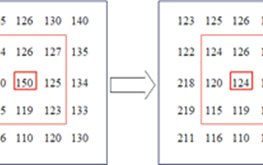
Robot Navigation Using FPGA Based Moving Object Tracking System
The paper describes an object tracking robot system implemented on FPGA. The ...
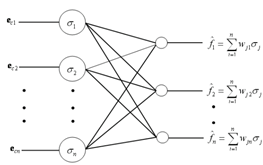
Trajectory Tracking Control of the Nonholonomic Mobile Robot using Torque Method and Neural Network
This paper deals with the problem of tracking control of the mobile robot with ...
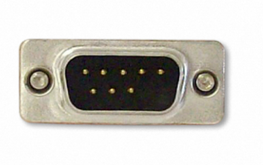
GIẢI PHÁP TÍCH HỢP CÁC MÁY XÉT NGHIỆM Y TẾ VÀO HỆ THỐNG PHẦN MỀM QUẢN LÝ BỆNH VIỆN
Giải pháp tích hợp máy xét nghiệm y tế vào hệ thống phần mềm quản lý bệnh viện ...



